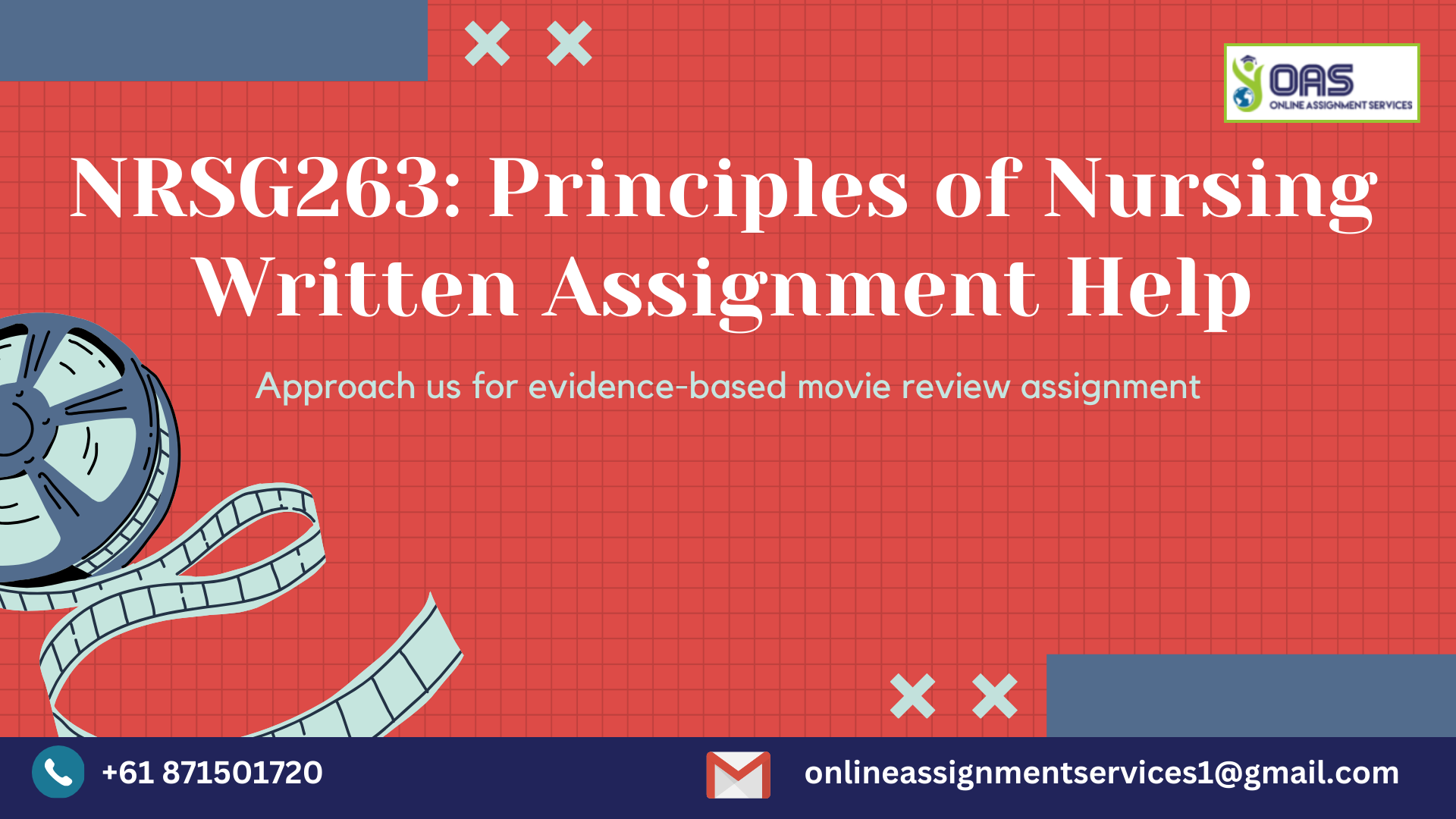NRSG263: Principles of Nursing Written Assignment Help

Question
NRSG263: In this essay-based assignment for the Australian Catholic University, the student is required to write a comprehensive assignment based on the analysis of a particular movie. The Nursing student should use the protagonist of the selected film as the case study to examine the mental illness that person experienced and the effects it had on the individual or consumer as well as their family.
Solution
The essay presents an extensive elaboration of the mental health issues faced by the main movie character. The movie chosen for writing this essay is Silver Linings Playbook, and the essay delves into the life of bipolar affective disorder sufferer Pat Solitano and his road to healing.
The solution is divided into different sections by our experts. These include an Introduction, Aetiology, and pathophysiology of the protagonist, the psychosocial impact of the mental illness, the role of the mental health nurse in providing non-pharmacological interventions in mental health care, followed by a brief Conclusion.
Introduction
Firstly, a brief introduction to the essay is provided along with highlighting a summary of the movie.
Mental illness is a topic that has long been stigmatized and misunderstood, but the depiction of mental health conditions in popular culture has played an essential role in shedding light on the complexities of these conditions. In recent years, movies have emerged as a popular medium for exploring mental illness, and one such movie is Silver Linings Playbook. This movie offers a unique perspective on the life of Pat Solitano, a man who struggles with bipolar affective disorder, and his journey to recovery. This essay will use Pat Solitano as a case study to explore the impact of bipolar affective disorder on individuals, families, and communities. The paper will begin by discussing the aetiology and pathophysiology of bipolar affective disorder, including risk factors, signs, and symptoms, using contemporary peer-reviewed literature to support the discussion.
Searching for Reliable Nursing assignment help? You are at the right place! WhatsApp us at +447956859420 today.
Aetiology and pathophysiology
This section presents the pathophysiology and etiology of the main character’s mental disorder. Additionally, the risk factors, symptoms, and indicators of the case are also discussed by our experts by referring to the recent, peer-reviewed research.
A complex mental health condition known as bipolar affective disorder (BPAD) is characterized by periods of mania, hypomania, and depression. Multifactorial genetic, environmental, and neurobiological factors contribute to the aetiology of BPAD (Hercelinskyj & Alexander, 2020). Numerous risk factors, such as family history, stress, substance abuse, and physical illness, have been linked to the emergence of BPAD. One of the most important risk factors linked to the development of BPAD is genetics. Studies have identified numerous genes that may make a person more likely to develop the disorder. These genes regulate neurotransmitters necessary for controlling mood, including dopamine, serotonin, and norepinephrine (APA, 2013). Individuals with a genetic predisposition to BPAD may also experience its onset due to environmental factors, such as stressful life events. According to studies, experiencing childhood trauma like physical or sexual abuse can increase a person’s risk of developing BPAD in the future (Leahy et al., 2019). Neurotransmitter system changes, particularly in the dopamine and serotonin systems, play a role in the pathophysiology of BPAD.
Want to read more about the Aetiology and pathophysiology developed by our experts in this mental health essay? Call us today at +61 871501720.

Psychosocial impact of mental illness
Following this, the psychosocial effects of mental illness on the person, family, and society are explored in detail by our experts. You can read a snippet of this section written by our experts below:
The individual, their family, and their community can all be significantly impacted by someone living with bipolar disorder. It is a multifaceted condition that can have an impact on a person’s feelings, disposition, behaviour, and cognitive abilities. This section will provide support using contemporary literature that has been peerreviewed as well as discuss the psychosocial impact that bipolar disorder has on these groups. Bipolar disorder significantly affects an individual psychosocially. Bipolar disorder patients frequently experience symptoms like manic and depressive episodes, which can be very severe and last for several weeks or months. The individual’s capacity to carry out daily activities, maintain relationships, and achieve their objectives may be impacted by these episodes. During depressive episodes, the person may feel hopeless, guilty, and worthless, while during manic episodes, they may feel agitated, restless, and impulsive (Foster et al., 2020). Bipolar disorder has a significant effect on a person’s social life as well. Due to the person’s mood swings, relationships may be difficult for them to maintain and may become strained.
Were you searching for Principles of Nursing Written Assignment Help Australia? Reach out to us at onlineassignmentservices1@gmail.com.
Role of the mental health nurse in providing non-pharmacological interventions in mental health care
The next section outlines the mental health nurse’s role in providing nonpharmacological therapies in mental health treatment. Experts at OAS ensure that the arguments presented here are supported by recent, peer-reviewed studies.
MHNs are tasked with identifying and treating mental health issues, creating care plans, and educating people in their communities about their mental health. To offer comprehensive care to people with mental health issues, they collaborate with other medical specialists like psychiatrists, psychologists, social workers, and occupational therapists. MHNs use evidence-based interventions that have been shown to be successful in treating a variety of mental health issues when providing nonpharmacological interventions. Cognitive-behavioural therapy is a non-pharmacological intervention offered by MHNs (CBT). The goal of CBT, a brief form of therapy, is to recognize and alter harmful thought patterns and behaviours that contribute to mental health issues. Among other mental health issues, it is frequently used to treat depression, anxiety disorders, post-traumatic stress disorder (PTSD), and eating disorders. MHNs use CBT to assist people in problem-solving and coping skills development, which can help lessen symptoms and enhance overall mental health (Lawrence et al., 2019).
Need Principles of Nursing Written Assignment Help? Just WhatsApp us at +447956859420.
Conclusion
The last section of this Mental health essay presents all the important findings of the essay. Keep reading to know how our experts write a short yet informative conclusion.
Mental illness has far-reaching consequences not only for the individual but also for their family and the wider community. The case study of Pat Solitano in the movie “Silver Linings Playbook” highlights the complexity of mental illness and the impact it can have on a person’s life.
OAS provides the most reliable Nursing assignment help. Check it out for yourself! Call us at +61 871501720.

